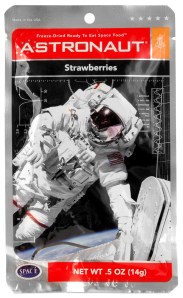 We’ve all tried the packets of freeze-dried “astronaut food” at one point or another, so it’s not surprising to find out that those packets — and even the more modern types of space food — probably won’t be enough to keep space travelers sated and healthy on a multi-year journey. With NASA planning a mission to Mars that could take five years or more to arrive at the Red Planet, the question facing researchers now is: how do we feed them?
We’ve all tried the packets of freeze-dried “astronaut food” at one point or another, so it’s not surprising to find out that those packets — and even the more modern types of space food — probably won’t be enough to keep space travelers sated and healthy on a multi-year journey. With NASA planning a mission to Mars that could take five years or more to arrive at the Red Planet, the question facing researchers now is: how do we feed them?
According to NASA, one solution might be a vegetable garden or some other type of self-replenishing food supply that would reduce the amount of food that needs to be on the spacecraft at launch.
“[The amount of food required to keep astronauts fed] is a clear impediment to a lot of mission scenarios,” said Maya R. Cooper, a senior research scientist in NASA’s Space Food Systems Laboratory, during a recent meeting of the American Chemical Society. “We need new approaches.”
Currently, astronauts require around 3.8 pounds of food per day for missions into space and aboard the International Space Station. That means a five-year mission to Mars and back would need almost 7,000 pounds of food for each astronaut.
A garden aboard the spacecraft could eliminate some of that food burden, though — and it’s one of the potential solutions being explored. Not only would a “kitchen garden” provide healthy food for the astronauts, but it would also serve as an air purifier of sorts, converting the astronauts’ exhaled carbon dioxide to oxygen.
“Right now, we are looking at the possibility of implementing a bioregenerative system that would involve growing crops in space and possibly shipping some bulk commodities to a Mars habitat as well,” explained Cooper. “This scenario involves much more food processing and meal preparation than the current food system developed for the space shuttles and the International Space Station.”
While that’s all well and good, we’re a bit surprised that NASA hasn’t considered another option: Twinkies. Lightweight, invulnerable to decay, and delicious, they could very well be the perfect third option for keeping astronauts fueled on their way to Mars.
So, think about it, NASA: Twinkies. Consider it a freebie from your friends here.
Editors' Recommendations
- The sound of science: Why audio is the next frontier in Mars exploration
- NASA is operating its Mars Curiosity rover from workers’ home offices
- Mars Helicopter attached to Perseverance Rover ahead of launch
- NASA’s Mars helicopter spins blades for last time before launch
- 11 million names to be carried to Mars on NASA’s Perseverance rover




